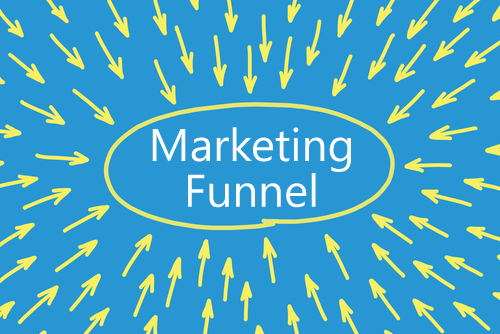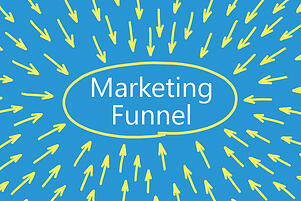
How to Develop Your First Inbound Marketing Plan: Where to Start
May 7, 2014
By Dolly Howard
 A well-crafted inbound marketing plan is essential for the success of every inbound marketer. If executed properly, it will serve as the cornerstone around which all your marketing tactics are built. Creating an inbound plan is a lengthy, detailed process, but by following these five steps, you can develop a solid inbound plan that can help you achieve and exceed your company goals.
A well-crafted inbound marketing plan is essential for the success of every inbound marketer. If executed properly, it will serve as the cornerstone around which all your marketing tactics are built. Creating an inbound plan is a lengthy, detailed process, but by following these five steps, you can develop a solid inbound plan that can help you achieve and exceed your company goals.
1. Analyze Your Company and Industry
The first step to creating a successful inbound plan is to build a detailed picture of your company and the industry you serve. Only when you fully understand both your company and your industry can you begin to focus your attention on developing tactics to attract the most qualified leads. Start by identifying your company’s value proposition and the specific industry factors surrounding why your product or service is needed.
During your analysis, ask yourself the following questions:
-
What are the pain points my specific product or service solves?
-
Do I offer something truly unique that no other company does?
-
What type of person or organization could benefit from my products or services?
-
If my company did not exist, where would people go to find a solution to their problems?
-
Who are my top competitors?
-
Is my pricing competitive and in-line with industry standards or does my pricing typically rank below or above my competitors?
-
What is the average price of a completed sale?
Next, start compiling information about the people and tools you have to work with. Identify the members of your marketing and sales teams and the way the team is structured. It’s very important to have both sales and marketing teams aligned so you can both assist each other in reaching the same goals. A crucial part of this process will be identifying whether or not there is an existing agreement in place that outlines the manner in which leads are handled from marketing to sales and if there is a clear identification of what a good lead looks like.
Finally, take note of the tools that are available to you. It’s important to identify which programs you use that will allow you to track your marketing efforts so you can see your progress. To help you evaluate your tools and systems, ask yourself the following questions:
-
Do you have a CRM? Is it integrated with a marketing system like HubSpot?
-
How effectively is your sales team utilizing the CRM system and is the data captured accurate and useful to marketing?
What programs do you use to do your email marketing and is it aligned with your CRM and your marketing tools?
2. Identify Your Goals
Once you have a detailed analysis of your industry and your company’s position in it, it’s time to start identifying your goals. Start by thinking at a high-level the top three goals you want to accomplish within the next 12 months. Do you want to gain more leads? Increase revenue? Build your social media presence? As you think about the goals you want to achieve make sure they are SMART goals, meaning that they are: Specific, Measurable, Attainable, Relevant, and Timely. By applying SMART principles, a goal to “increase revenue” becomes a goal to “increase revenue by 15% by October 2014.” The key is to build your goals based off of past known metrics so you have a baseline for comparison when you look to determine the effectiveness of your inbound plan.
Some examples of SMART goals include:
-
Increase organic search traffic by 10% each quarter for the next 12 months
-
Increase online leads by 15% by December 2014
-
Build a Twitter following to 15,000 by September 2014
If it’s not something you have tracked in the past but you want to focus on it for one of your goals you still can, as long as you have a way to track it moving forward.
3. Analyze Your Current Inbound Strategy
If you’ve never been focused on inbound marketing before, it’s likely your company will need to make a number of changes to your strategy, website and overall marketing plan to focus more on inbound leads. There are three crucial tactics to inbound marketing, Attract prospects, Convert those prospects into leads, and Close those leads into customers. How you execute these tactics will determine your overall success. Let’s look at them by tactic:
Attract
Attract is the most time-consuming part of your inbound plan and for good reason, without attracting customers to your website you will have no one to convert into leads and close into customers. Attract tactics include all the ways in which you can draw prospects to you, not through advertising, but by positioning your company to show up with solutions when your potential customer is looking for answers to their problems. This takes a multi-faceted strategy and an incredible amount of content in order to be effective.
Examples of ways to attract customers include, among others:
-
Blogging
-
SEO
-
Search Engine Marketing
-
Social Media
-
PR
Take some time to evaluate each of these areas to determine how well your business is attracting customers. An informative, engaging blog is the cornerstone for attracting customers. Blogging allows you to add an unlimited amount of web pages to the Internet for search engines to index, and by naturally scattering keywords throughout your blog content, you give your blog and your website as a whole a far greater opportunity of being found for your solutions when prospects conduct an online search. Blog content greatly increases your SEO while giving you valuable information to share with your prospects through email and on your various social media platforms.
Convert
Perhaps even more valuable than attracting visitors to your site is being able to convert those prospects into leads. You don’t have an opportunity to contact and nurture website visitors until they give you their information. This is gathered by creating a series of conversion paths that lead the visitor to valuable, gated content and ultimately encourage them to give you information in exchange for the free content you are offering.
Conversion paths consist of five parts:
-
Call-To-Action: A button or text that promotes your offer to website visitors.
-
Landing Page: The page a visitor lands on after clicking the call-to-action that further describes the offer and provides a form that captures information before allowing the visitor to download it.
-
Form: Fields on a landing page that capture visitor information before producing the promised content.
-
Thank You Page: After the form is submitted, visitors are brought to this page to gain access to their content. A good thank you page also contains a secondary offer that leads visitors to another landing page that drives them further down the sales funnel.
-
Confirmation Email: This is an email sent to the email address provided by the visitor when they downloaded the content. It thanks the visitor, identifies the content downloaded and provides a link to where the content can always be accessed.
Keep in mind the more landing pages you have, the better. Statistically speaking, companies that have over 30 landing pages generate seven times more traffic than companies that have less than 10. So spend some time determining if your company has conversion paths already in place, if they have all the necessary elements and then determine how many more you want to have to help achieve your lead generation goals.
Close
This third tactic comes into play after you have attracted and converted visitors into leads. Leads are still useless unless you know how to close the deal and turn them into customers. A savvy inbound marketing plan identifies and builds upon ways your company can bring qualified leads to the table and get them to trust you with their business. One of the best ways you can get leads to trust you is by keeping your company top of mind and providing leads with targeted nurturing emails that continue to deliver valuable information and solutions.
In order to have the greatest impact, you should establish a lead scoring process that allows you to segment leads into various buckets based on persona and stage in the buying process. At that point, you can send emails targeted specifically to that group that help move the leads closer to a purchase decision. Lead scoring also allows you to save valuable sales time by only sending leads to the sales team at the moments when the lead is most likely to buy.
As part of your inbound plan, evaluate the following in regards to your email marketing efforts:
-
What email marketing campaigns are you employing?
-
How frequently are you sending emails and who are you sending them to?
-
Do your emails contain a call to action that brings clicks to a landing page with an offer?
-
Are you scoring your leads and what criteria are you using to calculate it?
4. Prioritize Your Actions
At this point you should have a good idea of what’s working and where you have an opportunity to improve your marketing efforts. You may uncover a substantial number of gaps in your current marketing initiatives, but don’t get overwhelmed by the details. Begin prioritizing the areas you need to work on, focusing first on areas that will directly help you achieve your marketing goals. For each recommended change ask yourself, “will this change directly help me obtain more customers?” If the answer is anything but a resounding “yes,” put it to the bottom of the list. An inbound plan focuses on the goal. While you may determine that your website needs a facelift and a better navigation, those changes should come second to establishing a blog, and creating comprehensive conversion paths with the offers to go with them. Update your website too, but make it a latent priority in your list of tasks.
5. Execute
The final piece of your inbound plan is the execution. After all the time and energy you put into developing a strategic inbound plan, it’s crucial to trust and follow your plan in order to achieve the results you are looking for. However, pages of insights, findings, and information can leave you feeling overwhelmed without knowing where to start, so you need to compile an actionable 60-day plan based on your findings that will be easy to view and follow.
Your 60-day plan is best set up in an Excel document and outlines a timeline for each week with the specific tactics you will employ that coincide with the gaps you have identified in your inbound plan. The 60-day plan should include a list of blog topics, the dates they will be released, and the keywords and campaigns you will focus on during that timeframe. Also included in the plan should be specific updates you need to make to the website such as making sure your premium content is gated on landing pages with a form to capture lead information. By boiling down the highlights of your inbound plan into a 60-day format you will have a timeline and a list of actionable tactics you can execute against.
Your inbound plan could take you weeks or even months to complete and will require an incredible amount of analytical skills and communication with other members of your company to develop. But if you want to be successful at generating inbound leads and ultimately gain more customers and revenue, a complete inbound plan is your key to success. Have you ever developed an inbound plan for your company? If so, we’d love to hear about your success. Please let us know if we can be of any assistance in developing your own inbound plan.

About the author
Dolly Howard was formerly Director of Marketing for SmartBug Media. Previously she worked as a senior marketing consultant leading SmartBug Media clients in strategy for lead conversion improvement and total marketing ROI. As a past HubSpot employee, Dolly is excited to share her knowledge and help enterprise companies grow their business. Read more articles by Dolly Howard.







